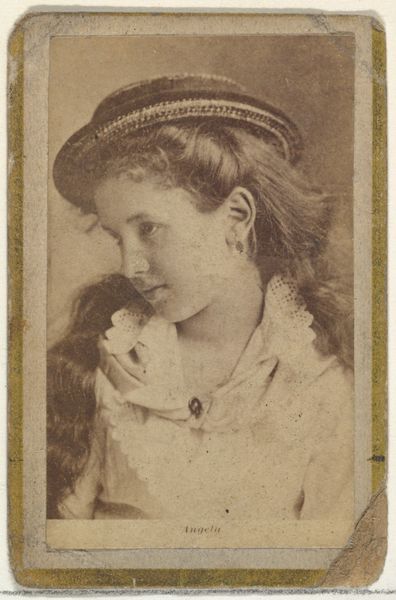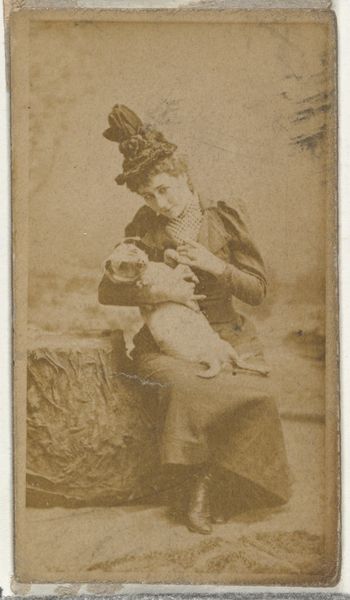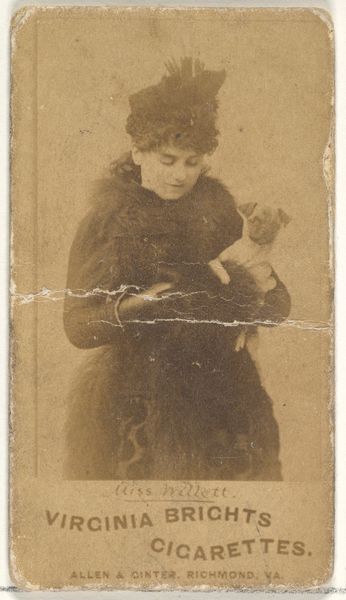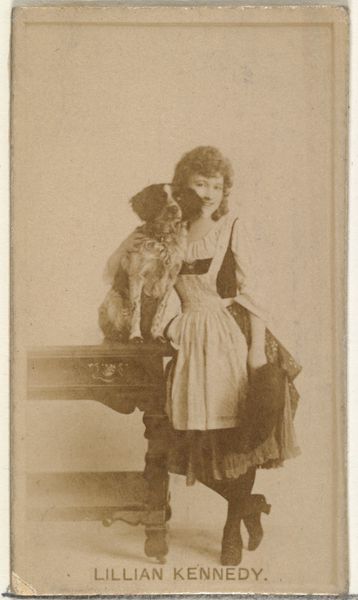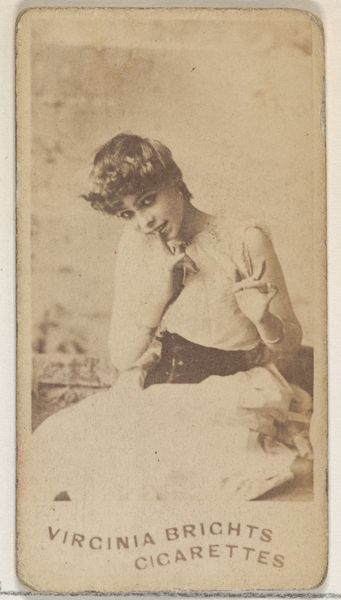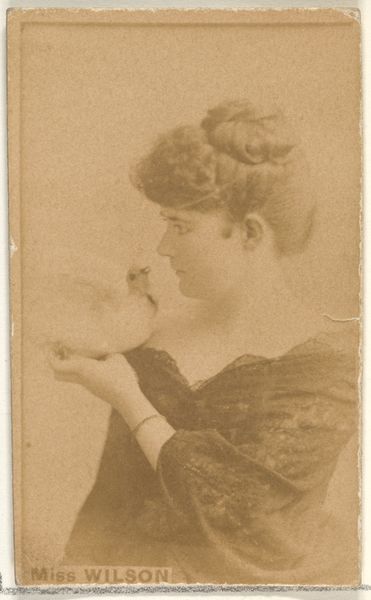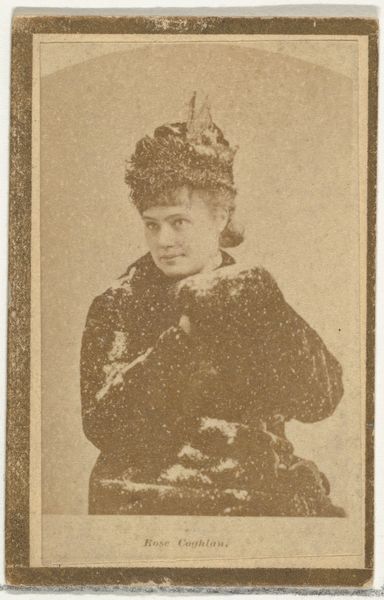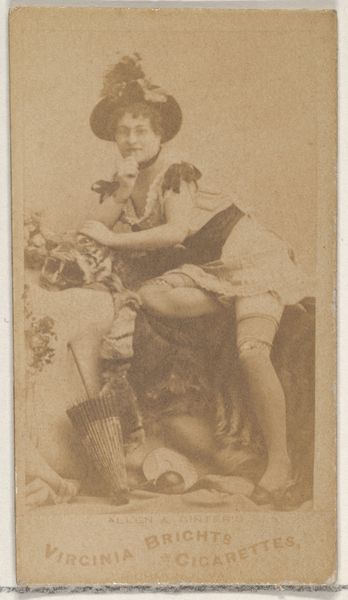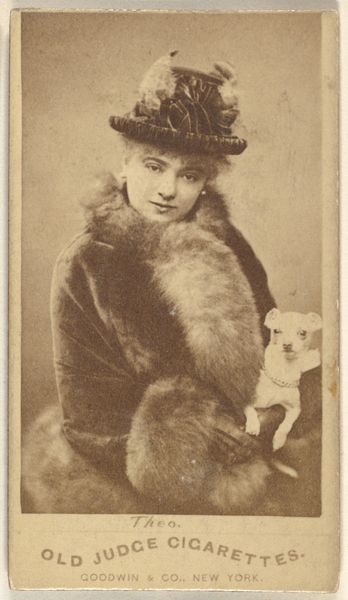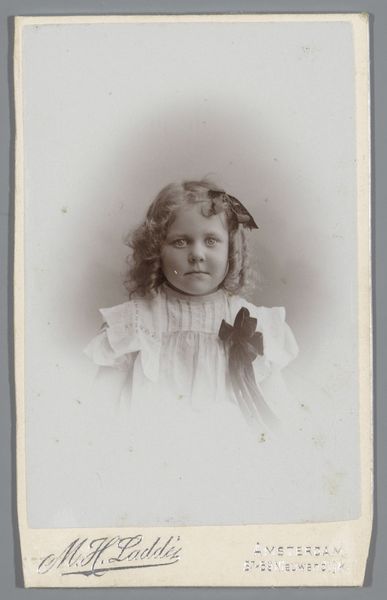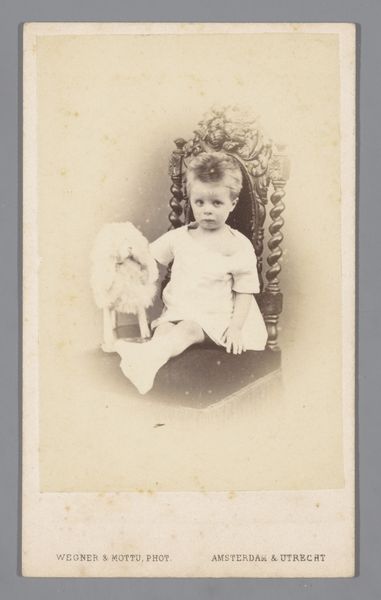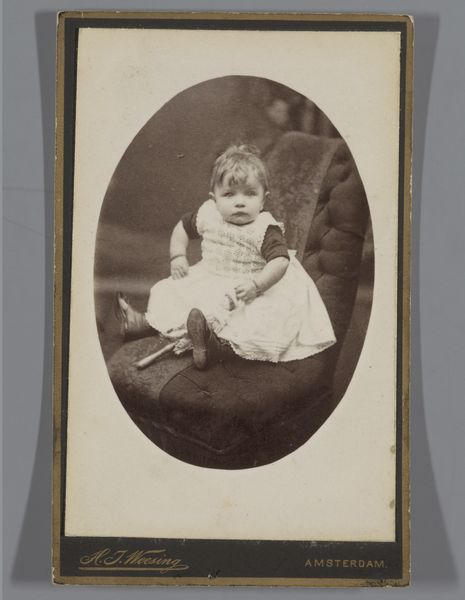
photography
#
portrait
#
still-life-photography
#
dog
#
photography
#
19th century
Dimensions: height 101 mm, width 62 mm
Copyright: Rijks Museum: Open Domain
Curator: Oh, I find this image utterly charming. The sitter, Wally Moes, is clearly delighted. Editor: Yes, there's a wonderful sense of intimacy captured here. The tonal range is quite soft, almost sepia-toned, which contributes to its antique feel. Curator: This is a photograph produced after 1886 by Wegner & Mottu, a studio based in Amsterdam. Think about what photography represented then. A democratized form of portraiture, bringing art, or at least representation, to a wider segment of the population. Editor: And that accessibility certainly affects how we perceive the composition. It's very direct. A woman, in what appears to be a striped shirt, clutching a small dog. Simple. Though the pose itself is telling; both human and animal are directed toward the viewer. Curator: The social context of photography is what interests me. It becomes intertwined with individual narratives and even documentation, even in what feels like a candid moment. How did someone like Wally Moes encounter Wegner & Mottu? How much would a sitting cost? Who was the photograph made for? It also intersects with material culture. Editor: True, the material object holds its own allure. The photograph itself, undoubtedly mass-produced, now speaks to the unique conditions of its time. We can observe a trace of the chemical process that made it, creating layers of blacks, whites, and browns with specific values and hue, giving shape to a person holding a dog. Curator: Yes, that is what truly brings this image to life: A woman proudly holding her beloved companion! The very texture of that affection speaks volumes about the shifting dynamics between humans and animals in the late 19th century, where pets take center stage, acquiring a distinct role within domestic settings. The presence of the studio marks, "Wegner & Mottu, Amsterdam" at the base, provides further context about this work's creation. Editor: Precisely, and thinking about it, that directness of the photo seems to have only grown more acute through its sepia coloration over time, now conveying so clearly a distant familiarity with this specific figure. Curator: Absolutely. The material reality provides an intriguing doorway to examining the production processes of artistic representations as part of the expanding bourgeois audience, as this studio made art and portraiture available at different strata within the growing middle class. Editor: An image filled with subtleties—from its rich textures and tonalities to its compelling figures. Curator: I find that my interest is in its position at the heart of broader networks: Production and material practices.
Comments
No comments
Be the first to comment and join the conversation on the ultimate creative platform.
